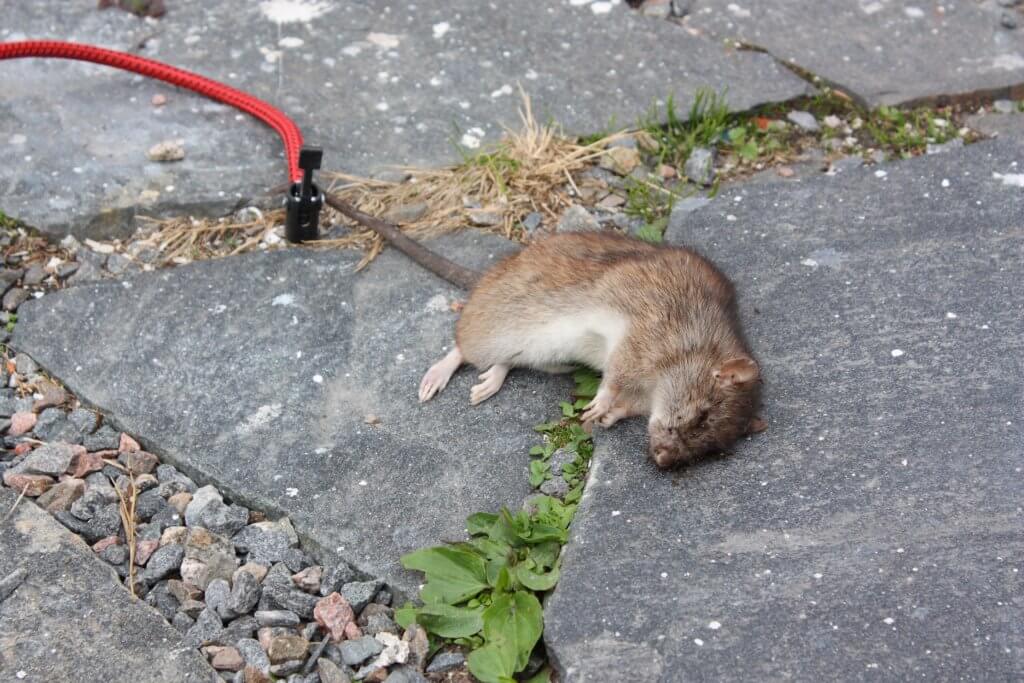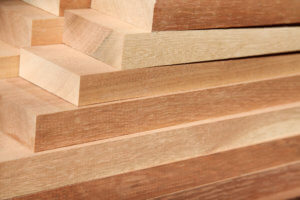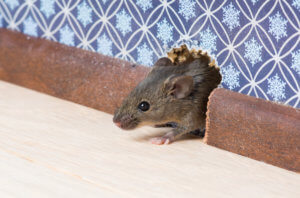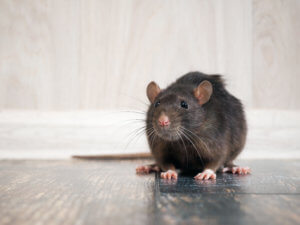
The smell of a rotting dead rodent can be atrocious. If you have ever been exposed to this smell it is truly (and unfortunately) unforgettable.
When choosing a method of rodent control that involves poison, please understand that there is a likelihood that the rodent may perish in an undesirable location that may lead to some very foul smells. This is actually a pretty common issue.
There seems to be a lot of conflicting information on the web as for what works and what doesn’t work to eliminate the smell. I have done a ton of research on this subject and have put together a step-by-step guide using a three pronged approach.
The stench you are smelling may be coming from three sources:
- The dead rodent itself
- The surface/material that the rodent corpse was decaying on (For porous type surfaces only)
- The air that contains the smell
Each of these sources needs its own form of treatment. This is super important or else the smell may continue to linger.
Let’s get right to the step-by-step guide. Here we go!
Step 1: Find the dead rodent and dispose of it.
This should absolutely be your first course of action and your quickest way to fresh air! You should consider this your most important “source of the smell” to eliminate. Please be super careful when disposing of a dead rodent and follow the CDC guidelines as referenced in the article How to Dispose of Dead Rodents.
If you have a dead rodent somewhere within the walls of your house*, just do your best to try and pinpoint the smell and (if in the dry wall) open up the wall.
*Note: you can also look to places where flies might be gathering or wet spots in the dry wall would give it away. It it highly possible that the rodent may be in the attic as well.
Fixing drywall is relatively easy though it may take some trial and error to locate the dead rodent. You could also purchase a boroscope, which is a camera that has a screen on one end a flexible tube with a lens and a light on the other end. With a boroscope you can get away with just drilling holes in the walls that you believe the rodent is at versus having to cut out an entire section.
Alternatively, you can hire a professional pest control service to locate the rodent and make any repairs.
If you have a dead rodent somewhere in your car, you might need to hire a mechanic to take the car apart to find it. It is common to find dead rodents in the air conditioning ducts*. It may also be the case that a rodent got caught in your fan and now there are rodent parts scattered throughout the engine compartment. Yuk.
*Note: to help eliminate this possibility, be sure to turn your air conditioning to circulate before you leave the car parked for the night.
Whatever the case may be, find the rodent (or rodents parts) and get rid of it.
If you can’t find the rodent, it can take anywhere from a few weeks to a few months for the smell to go away. This would then change your tactics from removing the source of the smell to effectively covering up the smell. If this is the case, you can skip to step 4 and step 5.
Step 2: Disinfect the area where the dead rodent is found.
If you have completed Step 1 and found the rodent, great job!
Initially we first need to disinfect the surface and surrounding area where the rodent was found. This process is pretty straight forward. I would highly suggest following the CDC guidelines here for properly cleaning the area.
Some common disinfectants used are a mixture of bleach and water, Lysol, 409, etc.
Step 3: Treat the Surface for the Smell
One consideration you should have is what type of surface the rodent died upon. If it is a plastic or metal (which is most likely the case if the rodent died in your car’s engine conpartment), then step 1 and step 2 should take care of any smell that is emenating from the material. It certainly couldn’t hurt to also spray an odor neutralizer as well.
If the rodent corpse was on wood or concrete then the disinfectant job might not take care of the smell by itself. There are a couple of different routes you can go here and many variables are in place so it is difficult to suggest just one fix-it method.
For wood and concrete, after completing step 2, I would try a few different methods to try and initially draw out the smell.
Initially you could try an enzymatic cleaner such as the Rocco & Roxie Professional Strength Stain & Odor Remover. This should help to break down the organic compounds that are creating the smell.
Alternatively, you can sprinkle baking powder or coffee grinds on the surface and leave for about 1-2 days. This should help pull the smell out of the surface as well as the air in that cavity. After a few days, if you directly smell the surface and it still smells, then you can try doing another round of baking soda/coffee grinds.
Lastly, you can try a sealant on the surface to lock the smell in. I would do a few coats of the sealant and then lightly sand in between coats. For wood, I would do a non-wax based shellac (if this area is not typically exposed to moisture) such as Zinsser Bulls Eye Shellac or a poleurethane (if this area would typically be exposed to moisture).
For concrete, there is a product called Kilz MAX Stain and Odor Blocking Latex Primer/Sealer that can be used to seal in the odor.
Step 4: Pull the Odor out of the air
There are many household remedies that can actually work very well, in a addition to some retail products. A few are mentioned in the Step 3, but here is a list:
The Obvious
- Fresh air
How to use: Open up all windows. Even get some fans going if you have them. This will help to flush out all of the stagnant air that is containing the odor.
Household remedies
- Coffee Grinds
- Raw Onion
- Baking Soda
- Vinegar
- Charcoal (the kind you BBQ with)
How to use: Place a bowl full of any of these in any room or area that has the odor. Replace with a new batch every 1-3 days.
Absorbent Products
How to use: Essentially the process for using these is very similar to the household remedies. Place one of the bags or products in each room or area that there is a smell. One bag or product will be sufficient for a certain number of square feet. Check the instructions to determine how many you may need.
Electronic Products
How to use: Ozone Generators are used professionally by hotels to get rid of nasty smells. These devices are SUPER effective but they are costly and potentially dangerous to use. Pretty much just don’t be in the room when the ozone generator is on and stay out of the room for at least 2 hours after you have run the machine. Be very careful not to breath in any of the gas. Follow the instructions! If you are trying to eliminate odor from your car, I would check with some nearby car dealerships to see if they would allow you to use their machine.
Air Ionizers can be effective as a supplementary solution as well. They essentially filter out the air, but I wouldn’t expect this to solely take care of the job.
Tip For Cars Only:
Change the air filter immediately. This should really help to initially reduce the odor you are smelling.
Also, for the air conditioner, you can spray Lysol or odor neutralizer in the vent and then flip it on. I would suggest also keeping the windows down as much as possible to get fresh air in there.
You could also sprinkle baking soda and coffee grinds on the floor mats or any fabric in the car and then vacuum up after a day or so.
Step 5: How to Mask Dead Rodent Smell (only if the rodent hasn’t been located)
If you have been unable to locate the rodent from Step 1, your new plan of action is to cover up the smell until nature takes its course. The smell should last anywhere from 1-2 months, so be prepared for the long haul.
If you can isolate the smell to a room or certain area of the house, try and seal it up as best you can. Don’t forget about the air conditioning ducts. Load up the house with all varieties of the Household Remedies and Absorbent Products from Step 4.
For cars, I would strongly urge you to keep searching for the source of the smell. There are only so many places where the rodent could be and this is your best bet for getting rid of the smell as quickly as possible. In the mean time, you can get tons of air fresheners including the ones that you can stick in the vents.
Peppermint oil can do a pretty good job as well in masking this odor. Put some drops on cotton balls and then hang around the room or inside the car.
I hope this article has been helpful! Please let me know how your progress is going!
For any questions/comments, please drop a note below!
Thank you!!
-Rat King Dave
This page contains Amazon Affiliate links. I will receive a commission for any purchases made through these links, though at no additional cost to you.






Rats moved into garage during winter. Wife put out poison cubes. Unfortunately they had decided to build a nest inside the engine compartment. We started to smell a rat! Something very rotten in Denmark. Found and removed a cube of the poison in battery well. Scraped and cleaned 2 other areas where cubes had melted from engine heat. Vacumed the turds. Found a couple of squirrel droppings as well. Shampood the engine with degreaser and pressurized water. Putred smell was less but remained. Remove the cabin filter housings and found the nest. No filter in place. Cleaned and sanitized area. Removed wipers an vent housing on other side to clean out that also. Added a new filter with some lavender oil drops added. Success at last. Pet store has oder stain sprays. We got a lavender scented one. Bought a can of skunk deoderizer also but didn’t need it. Going to mechanic to put it up on hoist to double check for any other evidence and to fix some wiring the little blighters gnawed.
Hi Ken! Wow.. that sounds like a nightmare. Ugh… sounds like you have eliminated the nest and tried to get rid of the scent that was attracting the rodents so that’s a great start. Please be sure once you get your car back to implement some preventative techniques (check out the steps on the home page) or at least keep taking looks under the hood every few days for more signs of rodent droppings. The rodents are more likely to come back now that your car has been hit once so be sure to keep an eye out for more intruders. Any questions in the meantime, please ask away! RKD
i have heard that anti freeze is great for killing rats. i know that it’s dangerous to all other domestics, but we have already had more than $1200 damage in the last 6 months and 4 trips to the local mechanic.
comments……..?
Hi JD! Yes, antifreeze can certainly kill rodents and a common method for using antifreeze is to take a bucket and fill it with about 4-5 inches of antifreeze at the bottom, build a ramp that leads to the top of the bucket and juts out over the top, then hang some cheese like just out of reach over the center of the bucket. The rodent will climb up the ramp to try to get the cheese and will fall into the bucket and drown in the antifreeze. This won’t necessarily keep rats out of your car but is just like another form of a trap. Hope this helps!
Ozone generator. Miracle worker. They can be dangerous so can be hard to find to rent, but there are services who will treat with them (can be expensive). And they are a little pricey but you can buy them. I am lucky enough that there is a company in my town that will rent one for $100 for 24 hours. I have gotten rid of heavy, heavy cigarette smoke in a used trailer and a car, smell in a thrift store wool rug and just 15 minutes can freshen a room.
Hi Gene! Thanks for the comment! This is good info for anyone interested in using an ozone generator! Thank you!!